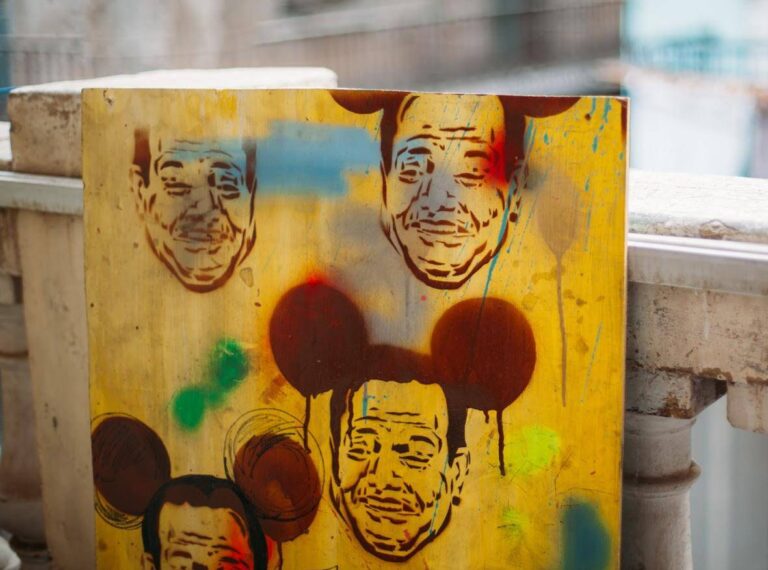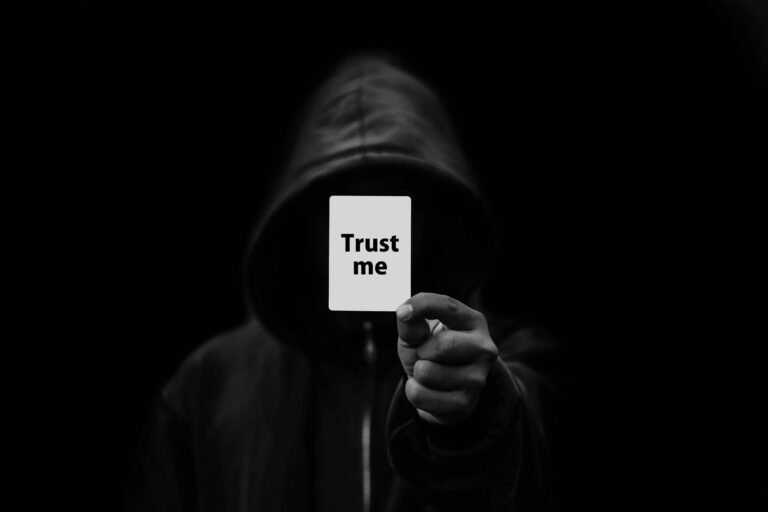“Depict another image of Syria, creative and resilient.” Here is the intent of the festival Syrien n’est fait [Syria, if nothing is done] in Paris. Taking place over several days, it blends visual arts, literature, real and fictional stories. A will to shift perspective, to move away from the image of a country “whose name has become synonymous with a complex and unintelligible conflict”. What does this perspective tell us about how to look at things? Where does it come from, and who shapes it?
In 2011, the people of Tunisia, Egypt and Syria rose up against their rulers. The aftermath of these revolutions differed widely from country to country. Ten years later, many media are once again taking on the subject for an assessment. Between media attention, a concern for accurate information and a need to articulate pains and victories, how is the narrative of the revolutions constructed?
When people are quiet, messages on the walls remain there. […] But then people started writing everywhere, and that was the whole point of it! The walls are still speaking, though. That means the idea has worked
Ammar Abo Bakr, Graffiti Artist
Immediate need for information : the role of the media
Cover. A word used to designate the act of taking on an event, an issue and of telling it. A camera or a pen in one hand, a journalist can relay an event which takes place almost in real time on the other side of the world. As soon as the uprisings began, major media sent journalists on site and mobilized their correspondents. The biases of those who narrate the story must be however taken into consideration.
Interviewed in the Revue des médias as to whether or not it is necessary to live among the people whose stories are being told, war journalist Rémy Ourdan answers: “Journalism is a type of balance point between immersion and distance. You need to immerse yourself as much as possible to understand better, to be more subtle, closer to the issue and to people. And you need to maintain a distance to check the facts, keep a critical ability to analyze the information and pass it on to the reader. There is no rule, it’s a very tenuous balance point.”
In the early days of the revolution, local journalists documented sit-ins and protests by taking note of the specificity of each event. Thameur Mekki, chief editor in the independent Tunisian media Nawaat, still remembers the first event that marked him as a journalist. The massive sit-in at the Kasbah on January 23, organized in order to “demand a constituent assembly, obtain the government’s departure and fight against corruption and impunity”, remains vivid in his memory.
Very quickly, the foreign media also took hold of the facts, bringing their reach to a global extent. In some countries, they are sometimes the only ones able to speak, as the local press can be muzzled and prevented or even repressed by the government. However, their handling has, in fact, a few biases.
Thameur Mekki tells us: “In Tunisia at the beginning, there was this attempt to appropriate the revolution and insist on its globalized aspect. (…) A few media culturally appropriated what happened. Emphasizing that this a ‘Facebook or twitter’ revolution is quite belittling regarding the movement. It is not Mark Zuckerberg who was out on the streets, protesting and facing police brutality. There was also an orientalist vision of the revolution, with the term of ‘jasmine revolution’. The only thing missing was a postcard.”
Even today, ten years later, the French press still relays the revolution as a failure. A crippling word, which is not subject to any intricacy or complexity. For Thameur Mekki, the treatment of the Tunisian revolution today lacks a meticulous analysis of the record of the party governing since 2011: Ennhada. This is not the case of cartoonist Nadia Khiari, who doesn’t fail to pinpoint the party and whose eye, in general, portrays Tunisia by means of caricature and satire. Born from the artist’s pencil on January 13, 2011, the cat Willis from Tunis, frees itself from the codes of writing and allows an approach that is both complex and accessible. The book Willis From Tunis : 10 ans et toujours vivant [“Willis From Tunis: 10 Years and Still Alive”], released earlier this year, testifies to the still existing vitality of the revolution.
Emotion and embodiment, the power of street art
Met in Cairo in December 2015, Ammar Abo Bakr is one of the most respected figures in Egyptian urban graffiti. An artist and activist, his work has travelled the world. “I take to the street to open a dialogue with people, to deliver information that the media are unable to convey,” he explained to us at the time. If the media are seeking to pass on the news about the revolution, Ammar, for his part, is restoring its cry. In 2011, since the first uprisings, walls became a means of expression for artists. Graffiti is literally a newspaper on the revolution which enables a dialogue with the people but also among artists. The works, produced by several hands, at nightfall, very often represent martyrs such as Bassem or the Ultras Ahlawy, whose seventy-two members died in the riot at the Port-Saïd stadium in February 2012. In their own way, street artists thus narrate the revolution through portraits and with emotions, reminding the protesters, the authorities or mere bystanders what it is… and what it was.
“Bassem Mohsen Wardany. He is the very reflection of the revolution. He wears the truth on his face.” Bassem lost his eye during the revolution. He was kept in prison under Mubarak and under Morsi and was later killed in 2013. A black, wounded look, mouth rolled up, a scarred face. In the dark canvas that Ammar dedicated to Bassem in Mohamad Mahmoud Street, fly wings are springing from a mutant eyeball restored by the brush. In ancient Egypt, flies were a military decoration given to victorious soldiers after a battle. Ammar Abo Bakr likes to paint these small insects that buzz, disturb the system and are ultimately hard to get rid of…
Repainted or destroyed since 2013, walls in Mohamed Mahmoud Street have become the site of a memorial struggle. Graffiti artists regularly come back to repaint the drawings that survived or to paint new ones. “When people are quiet, messages on the walls remain there. People complain that artists no longer go out on the street. We get caught now… But then people started writing everywhere, and that was the whole point of it! The walls are still speaking, though. That means the idea has worked.” said Ammar back in 2015.
It is not a matter of judging the success or failure of a popular revolt movement. There is no turning back, even when violence and oppression may have worsened
Leyla Dakhli, Tunisian historian
If we want to document the revolution in this country, “we can’t rely on [institutions] because there is still [an authoritarian regime] in place. So we have to look at cultural sources, slogans, songs, critical and ironic cover versions of jokes or poems” affirms Elene Chiti, a cultural historian of the Middle East on France Culture. While the media are prey to bitter censorship, art bypasses the constraints by suggestion, second degree or irony. A different way of telling the revolution using the resources at hand. But for how long?
Today, on Place Tahrir, all traces have been wiped away. Forbidden gatherings, ubiquitous authorities, renovation work without a single tribute to the revolution: It is a time of oblivion. One of the only canvases still standing in Mohammed Mahmoud Street — adjacent to Place Tahrir — is another work by Ammar. A child bites into a piece of bread, eyes wet. Its title: “Glory To the Strangers”, is hardly identifiable today. This organized destruction of collective memory is a real political matter in Egypt.
Beyond the balance sheet: archiving and restoring complexity
Regardless of today’s reality, the Tunisian historian Leyla Dakhli invites us not to dwell on a rigid balance sheet: “It is not a matter of judging the success or failure of a popular revolt movement. There is no turning back, even when violence and oppression may have worsened,” she said, interviewed by Le Monde Afrique. Because this daily life that tips over is what all revolutions have in common. Suddenly, everyone has to choose: to follow the collective momentum or not. Who are we and what do we do? To question, to show the multiplicity of individual choices: this is what a few artists and journalists do.
Leyla-Claire Rabih, a French and Syrian director, worked with twenty-year-old students on the Syrian revolution. She says she first came up against incomprehension and disinterest. “At the beginning, they said that ‘it’s so remote from us, we don’t get it at all.’ Later on: ‘I recognize myself in the character.’ The artistic creation brings a possibility to suggest a narrative that has a more subjective, sensible and emotional reach. ‘It is easier to get people to understand what is at stake in that way.’”
In Chroniques d’une révolution orpheline[“Chronicles of An Orphan Revolution”], she offers “another account of the Syrian revolution”. “I started when everything was drowning, particularly in the struggle against Daesh. Holocaust denial was flourishing. You would hear things like ‘nothing happened, everything was infiltrated, it was only a few protests, that doesn’t make it a revolution, it was manipulated and it came from abroad.’” To prevent this story from being forgotten as well as from being crushed like the uprising and those who contributed to it, the artist sets to work. She chooses to start with three texts by Syrian playwright Mohammad al-Attar. On the set, archival images and creation intermingle. “The link to reality has imposed itself. I needed to go through fiction in order to address the personal issues, but I didn’t want to disconnect from historical reality.” In line with this reflection, Leyla-Claire Rabih continues her search of singular trajectories for her new show, Traverses[“Crossings”] — which will be performed this year — by interviewing Syrian refugees in different countries. “These exiles leave permanent marks in their biographies. How to deal with these marks and how to transmit them?” The common denominator of this diaspora in the making: the disaster of departure. Yet, as she conducts these interviews, she realizes that this forced exile can be a lever of emancipation. “The thing that has changed my life the most is certainly the revolution” some Syrians have told her.
Help us tell the world to you !
Frictions is launching its club : by supporting Frictions, you’ll be supporting a community of authors and journalists who tell the world through intimate stories!

In Tunisia, the media Inkyfada works on collecting stories. Whether they are activists, artists or mere citizens, twelve Tunisians share their individual story on January 14, 2011, intermingling the facts with their own experience. The podcasts give a complex and deep narrative of the day Ben Ali fled. Listening to them, we learn about the violence of the revolution as well as the contradictions of those who lived it. In episode 11 as an example, we meet Saïf, who is twelve years old when the events take place. Torn between his mother who is a feminist and hostile to the regime, and his grandmother, who is for maintaining it, the child follows his mother reluctantly to the protests. Based on the podcasts, Inkyfada has made up a sound mapping of that day, when the fate of an entire country tumbled down. Whether they are journalistic or artistic, these works offer an alternative documentation of contemporary History, a necessary archiving to preserve the collective memory.
This is also apparent in For Sama, a documentary nominated for the Academy Awards in 2020. A Syrian student Waad al-Kateab improvises herself as a director and documents her daily life from the early hours of the revolt. Mad hope gives way to daily horror and fear. During a screening in Paris, a Syrian journalist and refugee in France, had to leave in the middle of the film, because of the unbearable pain of the images on screen. If narrating the revolution is crucial, one has to remember that it involves doing so on fresh wounds.
© photo : M. Drissi 2015










